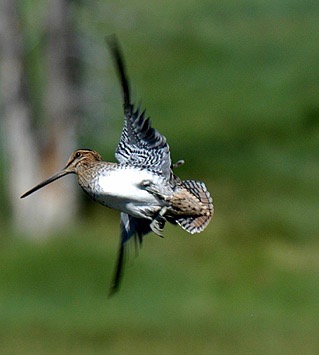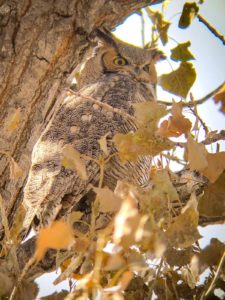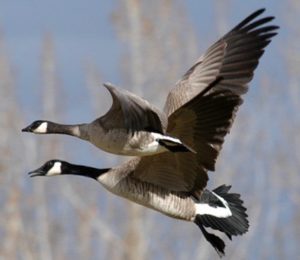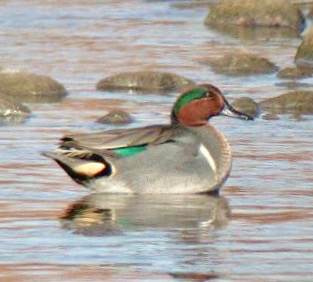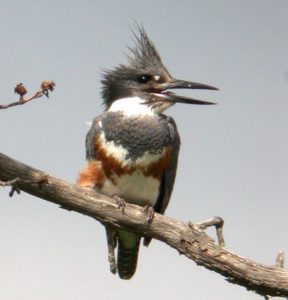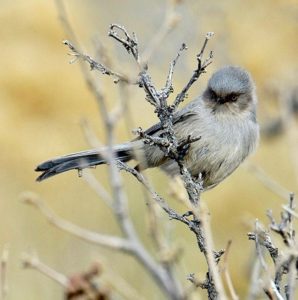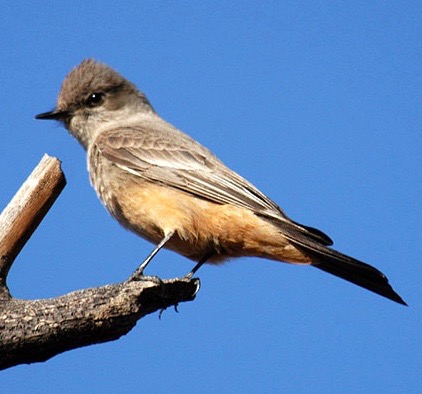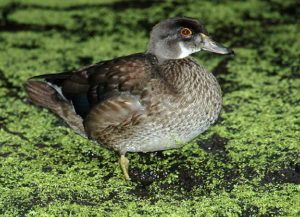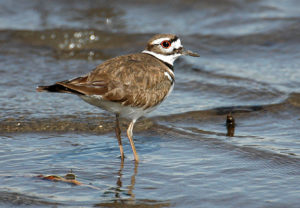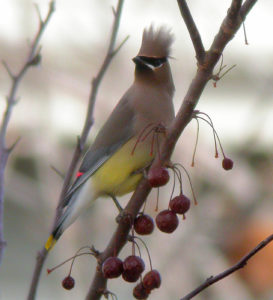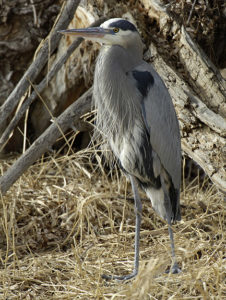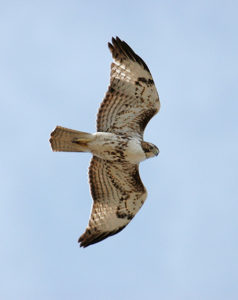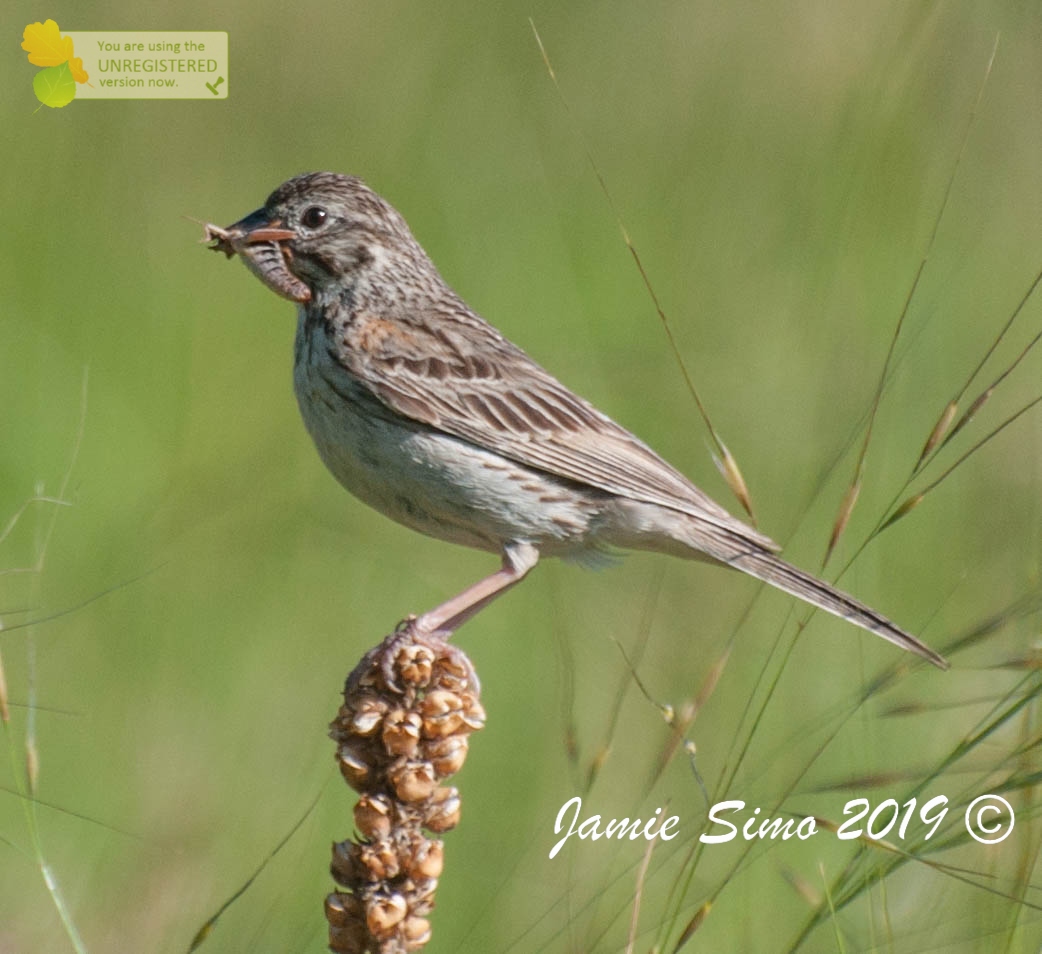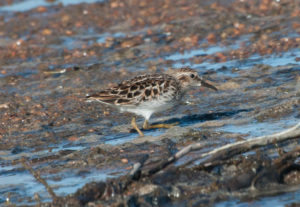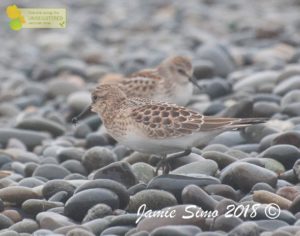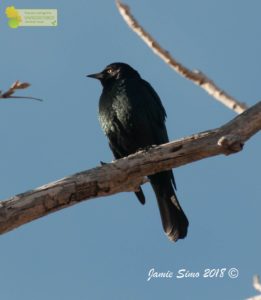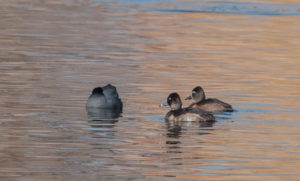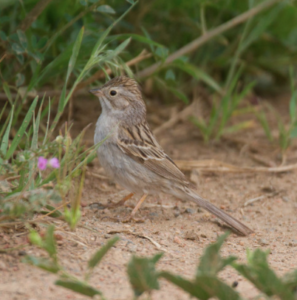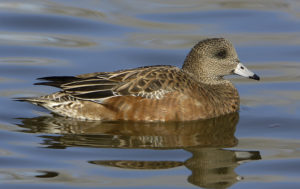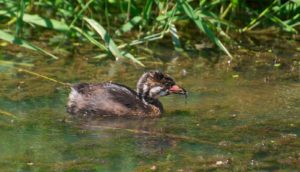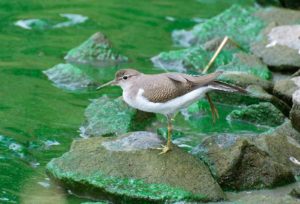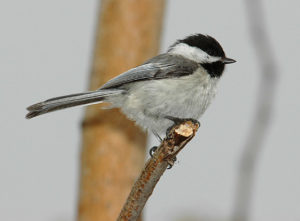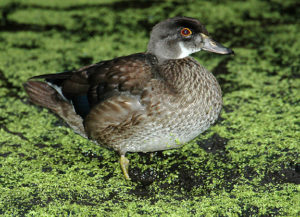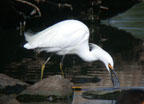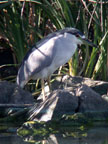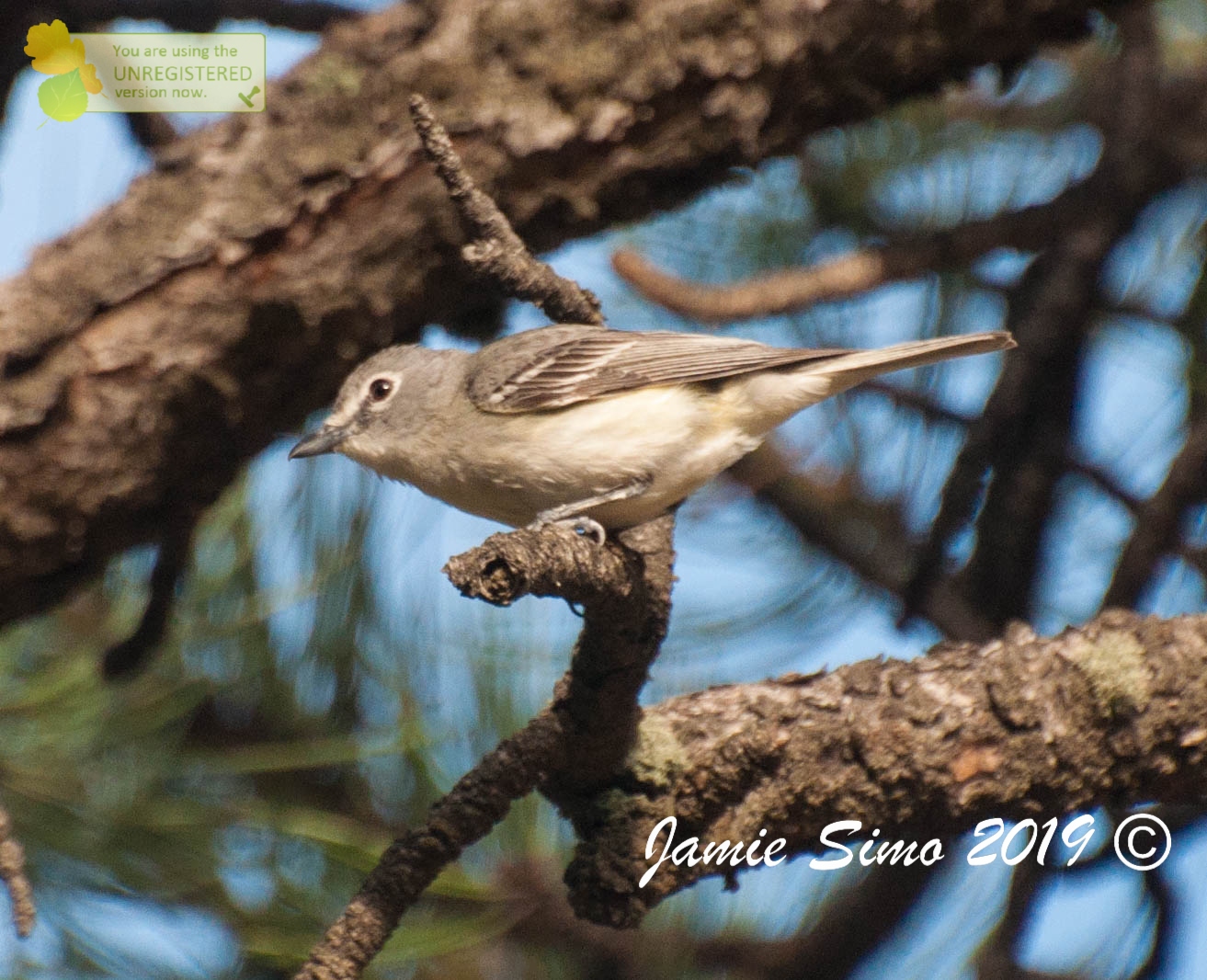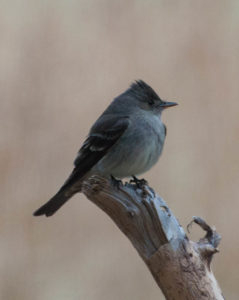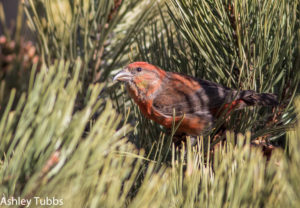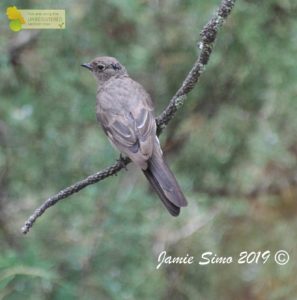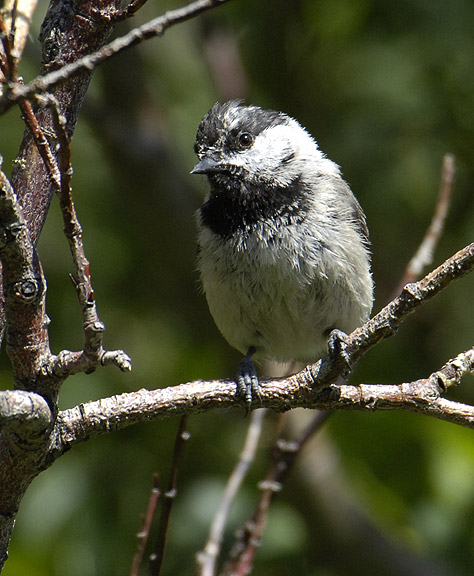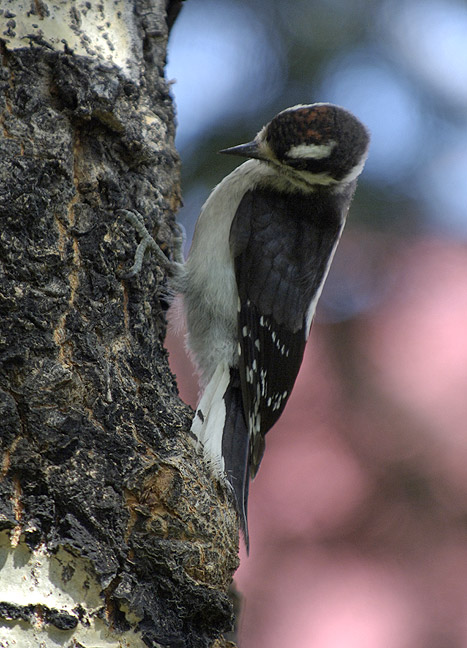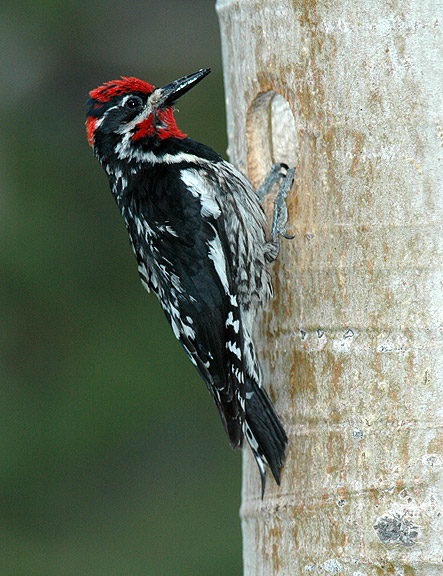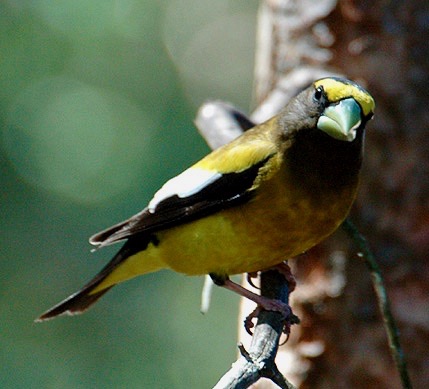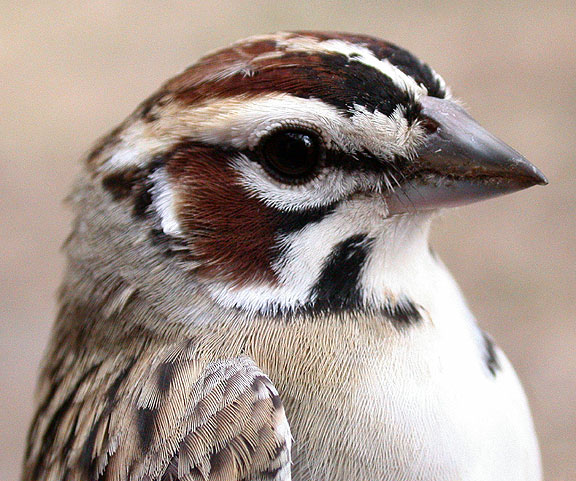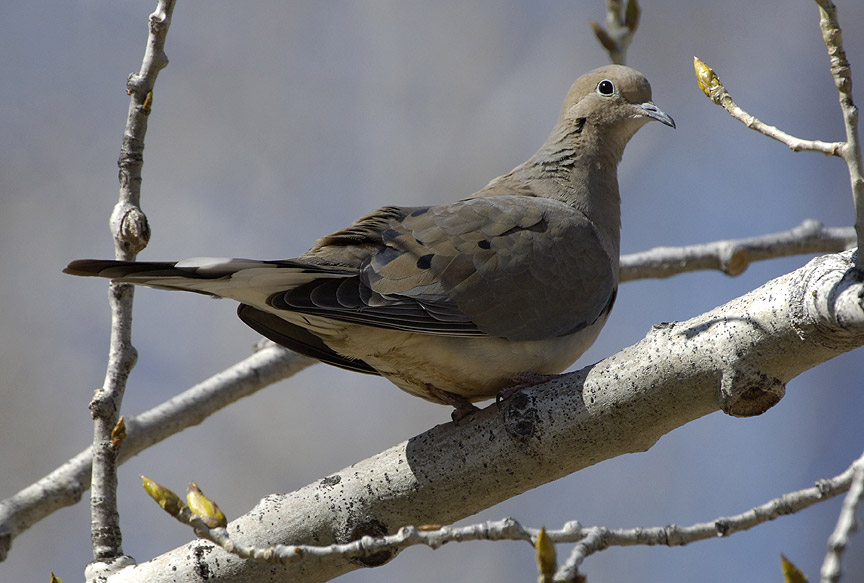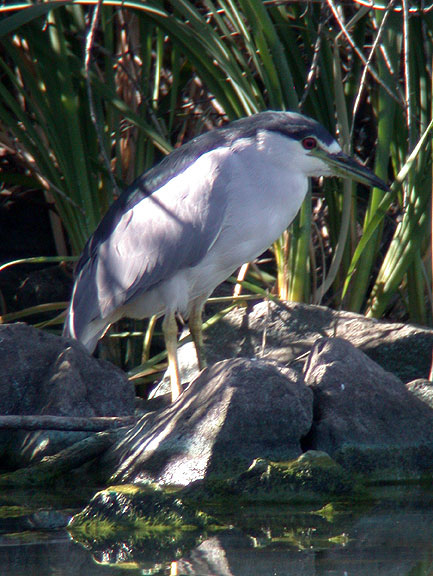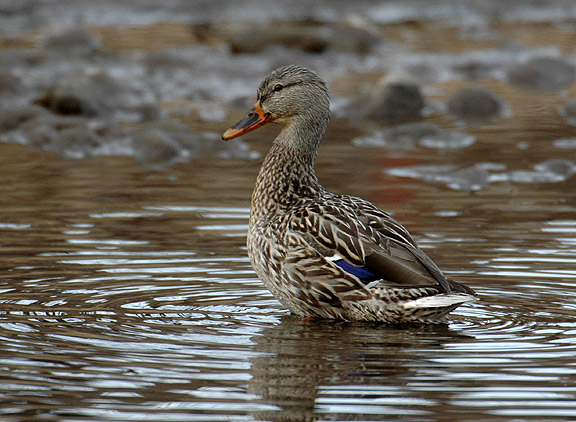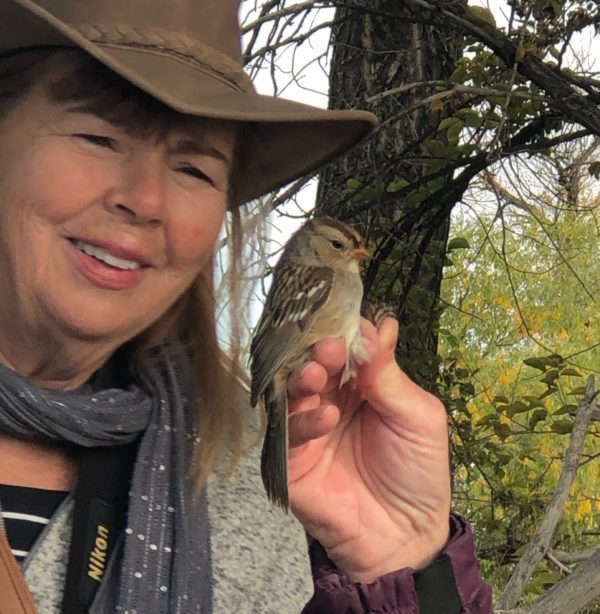
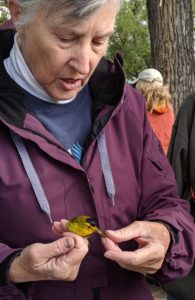
Meredith McBurney and Wilson’s Warbler (c) Heather Davis
It was a glorious morning at the Bird Conservancy of the Rockies’ banding station at Barr Lake this past Saturday! The Conservancy has been banding fall migratory birds here for over thirty years, and each year adds additional knowledge to what we know about these birds that pass through Colorado. We hustled out there, so didn’t really look at the few birds noted along the path. Initially, there was a bit of a breeze blowing, so only a few nets were open, but Meredith McBurney and the banding crew did have a couple of birds they had caught. Then, in the next half-an-hour or so, the breeze let up, the birds started moving around more, and the action got pretty good. In fact, it was so good, and Meredith so entertaining in explaining so many aspects of what she does, that we ended up spending almost two-and-a-half hours there.
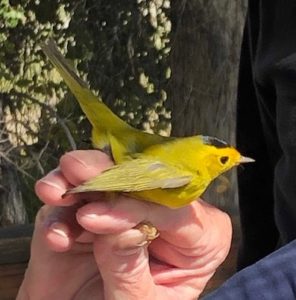
Wilson’s Warbler (c) Laurel Starr
Birds that we got see in the hand, and that some of us got to briefly hold in our hands, included: a feisty Black-capped Chickadee, a Ruby-crowned Kinglet, a couple of Dark-eyed Juncos of two subspecies – Oregon and Pink-sided, a couple of White-crowned Sparrows – subspecies “Gambel’s,” a Song Sparrow, a Lincoln’s Sparrow, an Orange-crowned Warbler, several Yellow-rumped Warblers – all in the “Audubon’s” group, and two Wilson’s Warblers. Each individual bird got to be looked at and discussed in detail.

Meredith McBurney at banding station (c) Laurel Starr
For starters, let’s talk about Juncos a little bit (better get your field guides out). Here in North America we have about fifteen Junco subspecies, some of these more closely related than others. Seven of these groupings have recognizably different plumages. One, the Gray-headed Junco, breeds in our mountains each summer. They, then, stick around through the winter, and six of the other groups, which have bred further north come down to also spend the winters here, and these have just started to arrive in the last couple of weeks. The two we saw were the Oregon and the Pink-sided. Note how the Oregon, regardless of whether it’s a male or female does not have black lores (the area between the eye and the bill), while the Pink-sided does have black lores. This is a really key characteristic because the duller colored individuals of both groups can otherwise look quite similar.
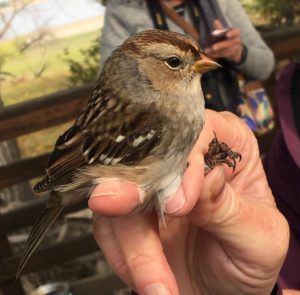
White-crowned Sparrow – juvenile (c) Patrick Blasco
Now, let’s take a quick look at White-crowned Sparrows. We have two predominant subspecies here in Colorado. The oriantha ones have black lores and breed up in the highest willow carrs and krummholz – right at timberline. They then spend winters in the southwest US and northern Mexico. The gambelii ones breed in far northern Alaska and Canada, and many pass through Colorado in the fall on their way to winter in Oklahoma and Texas. However, we can still have good numbers of both subspecies locally in the winter out on the eastern plains.

Orange-crowned Warbler (c) Doris Huguley
And, a bit on the warblers we saw. The orange crown of the Orange-crowned Warbler is almost never seen in the field. However, when in the hand, it’s possible to part the feathers on the head of a male and see a small patch of orange – which is exactly what we observed. We had a good variety of Audubon’s Warblers (note that the pale throat patch is confined to the throat and does not wrap around the side of the neck, as in the Myrtle Warbler). The rumps of all the ones we saw were bright yellow – this is the only part of the bird that retains that bright breeding yellow. The yellow patches on the flanks were quite variable depending on whether we had a male, female, or juvenile. Our two Wilson’s Warblers were bright yellow males with black caps.
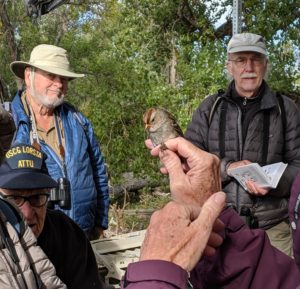
White-crowned Sparrow – juvenile (c) Heather Davis
While doing all our banding station activities we spent almost no time looking at the hundreds of birds out on Barr and its surrounding mudflats. A few notables though were the 800 or so Western Grebes, one Stilt Sandpiper, five species of gulls – including a couple of Lesser Black-backed Gulls, and a bunch of Double-crested Cormorants and American White Pelicans.

Cassin’s Vireo (c) Heather Davis
Finally, THE BIRD OF THE DAY was one more from the banding station, a Cassin’s Vireo! These guys breed up in the Pacific Northwest and pass through Colorado when going to and from western Mexico. They are rare during spring migration, but we do have the opportunity to possibly see a few during fall migration. Historically, they, the Plumbeous Vireo, and the Blue-headed Vireo were considered to be one species, the Solitary Vireo, but in 1997 they gained recognition as three separate species. The Plumbeous Vireo is the one that we know best in Colorado as they breed in our lower mountains and western canyons. These guys have the distinctive “Solitary Vireo” white spectacles and are virtually all gray. The Cassin’s Vireo, on the other hand, also has the white spectacles, but it has a greenish-gray back and hood with a yellow wash on the flanks, and some yellow in the wings.
A full morning at Barr Lake will keep our heads spinning for a while. Hope to see you on another walk soon!
Chuck
Barr Lake SP, Oct 5, 2019
36 species (+5 other taxa)
Canada Goose 68
Western Grebe 500
Western/Clark’s Grebe 300
Eurasian Collared-Dove 1
American Coot 6
Killdeer 44
Stilt Sandpiper 1
Franklin’s Gull 3
Ring-billed Gull 100
California Gull 60
Herring Gull 3
Lesser Black-backed Gull 1
gull sp. 500
Double-crested Cormorant 300
American White Pelican 200
Great Blue Heron 8
Bald Eagle 1
Red-tailed Hawk 1
Hairy Woodpecker 1
Northern Flicker 2
Cassin’s Vireo 1
Blue Jay 7
Black-billed Magpie 1
Black-capped Chickadee 3
Barn Swallow 180
Ruby-crowned Kinglet 1
European Starling 6
American Robin 1
House Sparrow 30
House Finch 1
Dark-eyed Junco 5
Dark-eyed Junco (Oregon) 1
Dark-eyed Junco (Pink-sided) 1
White-crowned Sparrow (Gambel’s) 2
Song Sparrow 1
Lincoln’s Sparrow 1
Orange-crowned Warbler 1
Yellow-rumped Warbler 7
Yellow-rumped Warbler (Audubon’s) 7
Wilson’s Warbler 2
